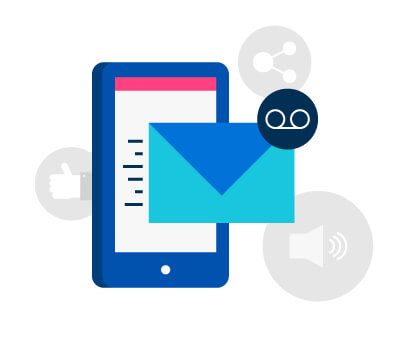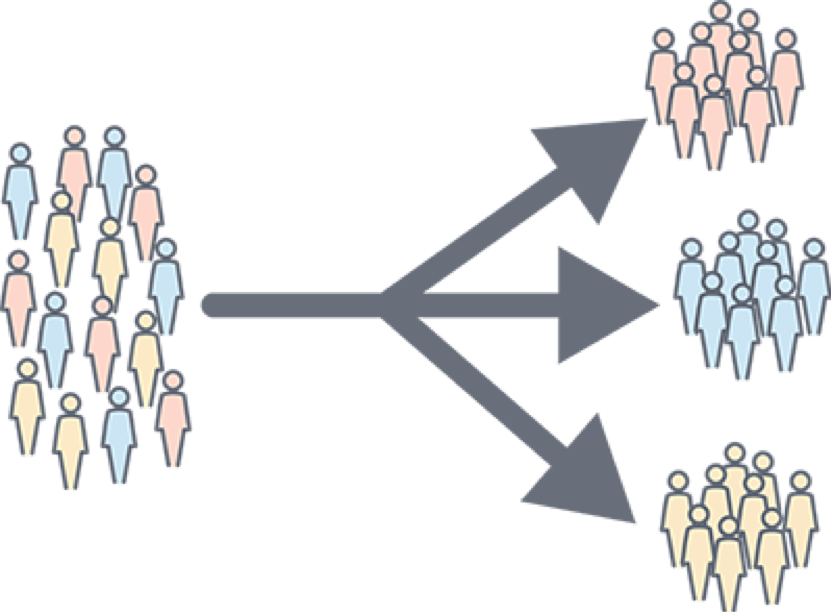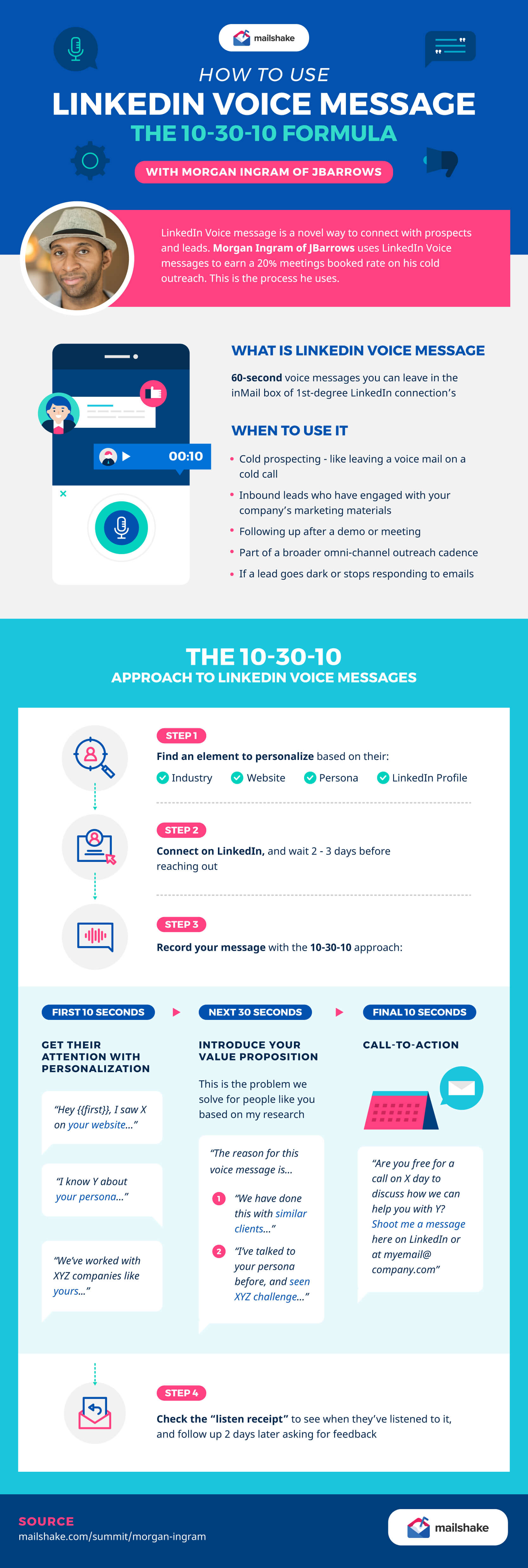What is a Voicemail Drop and How to Leverage It to Improve Your Prospecting

Contents
We live in a post-caller ID world. What do you usually do when you get a call from an unrecognized name or number? If you’re like most of us, you probably ignore it or decline it. In fact, 80% of calls end up going to voicemail.
According to RingLead, the average sales rep leaves 70 voicemail messages per day. That adds up to an average of 25 hours/month/rep.
But here’s where the digital world meets the analog world, allowing you to harness the strength of phone calls while getting around our proclivity to screen them and to opt out of the call-listen-leave-same-message tedium: voicemail dropping.
What is a Voicemail Drop?
At its simplest, voicemail dropping — also referred to as a pre-recorded voicemail — is literally ‘dropping’ a pre-recorded message into someone’s voicemail inbox. Their phone doesn’t ring, but they do get a notification that they have a new message.
Why Use It? 
It’s effective. While it’s easy to ignore or decline a phone call, people are far less inclined to delete a voicemail without at least listening to it. In fact, voicemail drop providers like Drop Cowboy boast a response rate between 5-20%.
It’s affordable. Depending on the provider and plan, it can cost just a few cents per message delivered.
It’s far-reaching, working with both mobile phones and landlines.
It’s user-friendly and intuitive. You can quickly upload a recorded message, or make a new one from your account dashboard.
It’s a timesaver. Instead of individually calling dozens of numbers, waiting for the call to go to voicemail, listening to the greeting, and leaving your message, you can record one personalized message for a segment of your call list and instantly send it out with one click. Save those messages in your personal library, and the right message is always waiting and ready to go.
How much time would that save per rep or sales team? If one rep spends an average of 25 hours/month, then a team of five reps loses 125 hours per month to voicemail alone. Take those hours back.
Finally, you can connect and engage without having to bother or interrupt prospects at home and work. They hear the message and respond at their convenience.
How to Use Voicemail Dropping with Prospecting
Prospecting is an art and a science.
If you’re involved with sales in any way, you’ve probably got a tried-and-true method for prospecting already (hint: email). You’ve got your favorite tools and services and likely an email prospecting template or two.
So here’s the good news: adding voicemail dropping to your prospecting arsenal is easier than you think. In fact, you have the skills and know-how already.
The golden rule is to treat a voicemail drop like you would a cold email: personalization and relevancy are of the utmost importance.
If it’s true for email prospecting, it’s true for voicemail dropping.
Do Your Homework
Just as you research your prospects for email, do the same for voicemail. Segment your call list and personalize a message for each segment.
You obviously can’t record a personalized message at the individual level, but you most certainly can for carefully-chosen segments:

- Attendees at an upcoming or just-finished conference or event
- Companies in a particular niche within your market
- Past customers you haven’t heard from in a while
- Marketing directors, sales managers, IT engineers, and C-suite execs
- Demographics like location, number of employees, or annual revenue
You get the idea. Segment and personalize for maximum impact.
Perfect Your Message
You only get one chance to make a first impression.
With voicemail dropping, that’s not entirely true. You have a luxury not possible when leaving a message in real-time or speaking to a live human being: You can draft, revise, practice, record, delete, and repeat as often as you want until your message is exactly what you want it to be.
Less is More
Keep your messages short. Very short.
Most experts recommend 30 seconds or less. This is not the time for your full sales pitch. You’re trying to get a response, not a sale.
Every second beyond 30 decreases your chances of getting a response and connecting by 2%. So aim for the sweet spot of 17-29 seconds.
Find a Template
Just like email, you can save yourself a lot of time and effort by taking advantage of templates. There are plenty out there, and they work well.
With less than 30 seconds to work with, you want to keep it short, concise, and intriguing.
Hubspot suggests a basic voicemail structure that includes:
- Name
- Reason for calling
- A benefit of calling back
- Your contact information
- A promise to send a follow-up email (using an automated tool like Mailshake)
No more, no less.
Inside Sales provides a slightly different outline:
- Opening statement (name, and why you’re calling)
- Trust ladder
- Positioning statement
- Key benefit to them
- Proof story
- Commit to continue (C2C)
And PhoneBurner sketches their template like this:
- Who are you?
- Why are you calling?
- What is the next step, and why should they take it?
- Repeat yourself
So what’s the right way, the one ideal template? It depends on you and your prospects.
Track, Monitor, and Tweak
Sound familiar? As I said, if it applies to email, apply it to voicemail as well.
Track and monitor how each message performs; which ones are crushing it vs. which ones are getting crushed.
A/B test to optimize your message over time. Is it better to open with your name, or leave that until the end and start with the benefit to them? Test and find out. Most of the providers listed below make it fast and easy to track and monitor.
Best Practices
Leave some ambiguity and mystery to pique their curiosity.
Request a specific callback time – or range – rather than leaving it open.
Keep it short and to the point. Don’t ramble on. Give the impression that your time is valuable … because it is.
Make it more about them and less about you.
Don’t sell.
Namedrop – friends in common, referrals, and so on – if applicable.
Stay positive, enthusiastic, and genuine.
Voicemail Dropping Services
Look to these providers if you want to add voicemail dropping to your prospecting tool belt:
LinkedIn Voice Message
Relatively new on the scene of voice mail drops is LinkedIn Voice Message. LinkedIn Voice Message allows you to leave a voice mail in a prospect’s LinkedIn inbox, just like you would on their phone.
Morgan Ingram of JBarrows dove into how to use LinkedIn Voice Message for your sales prospecting cadences in his interview of the sales prospecting summit. Click here to watch the whole interview, and see below for his 10-30-10 approach to leaving effective messages.

The prospecting game is never over. You always need more in the funnel. Voicemail dropping, partnered with cold email, is a powerful one-two punch for any sales department, regardless of industry or niche.
Voicemail dropping is 100% compliant, generates up to a 96% listen rate vs. 15% connect to live person rate, and is just one example of the integration between digital and analog that’s possible in the modern world.
Try it.





